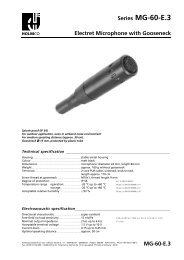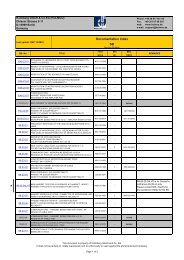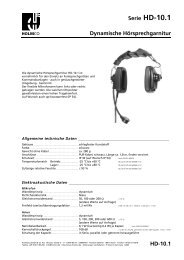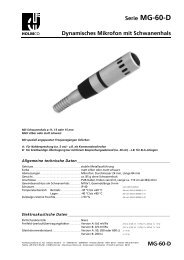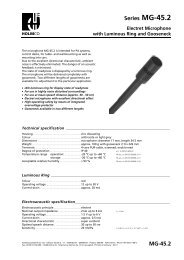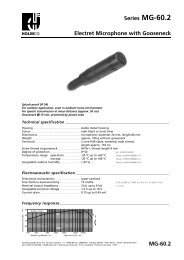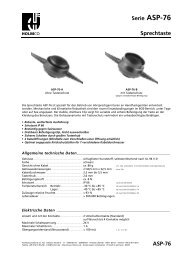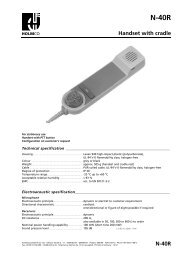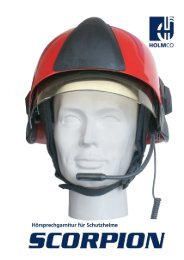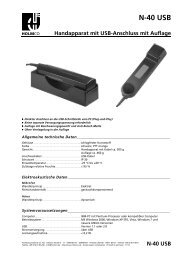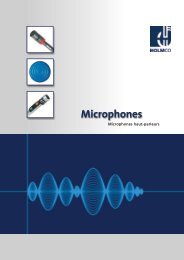Handsets - HOLMCO
Handsets - HOLMCO
Handsets - HOLMCO
Create successful ePaper yourself
Turn your PDF publications into a flip-book with our unique Google optimized e-Paper software.
3<br />
<strong>Handsets</strong><br />
Directional pattern<br />
The directionality or polar pattern of a microphone describes<br />
how its sensitivity varies with the angle of incidence<br />
of the sound. It is basically determined by the mechanical<br />
design of the microphone.<br />
Directional patterns<br />
Omnidirectional<br />
A microphone that has an omnidirectional pattern is equally<br />
sensitive to sound waves from any direction. All ambient<br />
noise is picked up, so that the user at the other end of the<br />
line gets an acoustic impression of the situation at the<br />
place of use.<br />
The omnidirectional characteristic is ideally suited to applications<br />
with low to moderate noise levels. If high levels of<br />
background sound make communication difficult, however,<br />
then a noise-cancelling microphone is preferable.<br />
Cardioid<br />
A microphone with a cardioid pattern picks up sound primarily<br />
from the front and from the side. The microphone<br />
largely screens out sound coming from behind.<br />
This directional pattern is the ideal choice when the interfering<br />
noise source lies behind the microphone. The cardioid<br />
characteristic makes clear communication possible even at<br />
high background noise levels.<br />
Figure of eight<br />
A microphone with the figure-of-eight pattern detects<br />
sound from two opposite directions. Sound coming from<br />
the side is suppressed. The figure of eight is useful when<br />
unwanted noise is mainly coming from the side.



